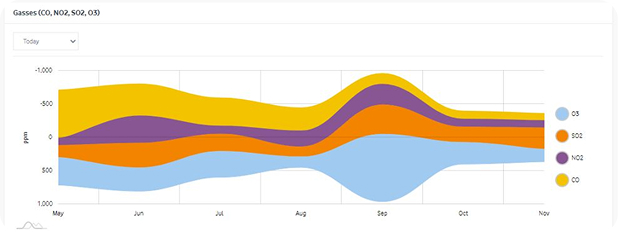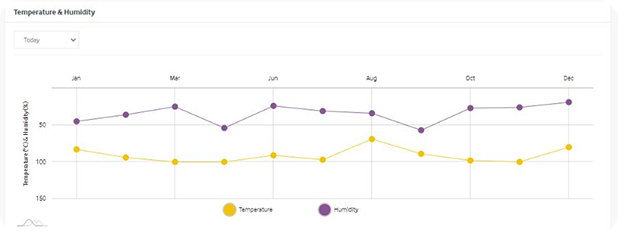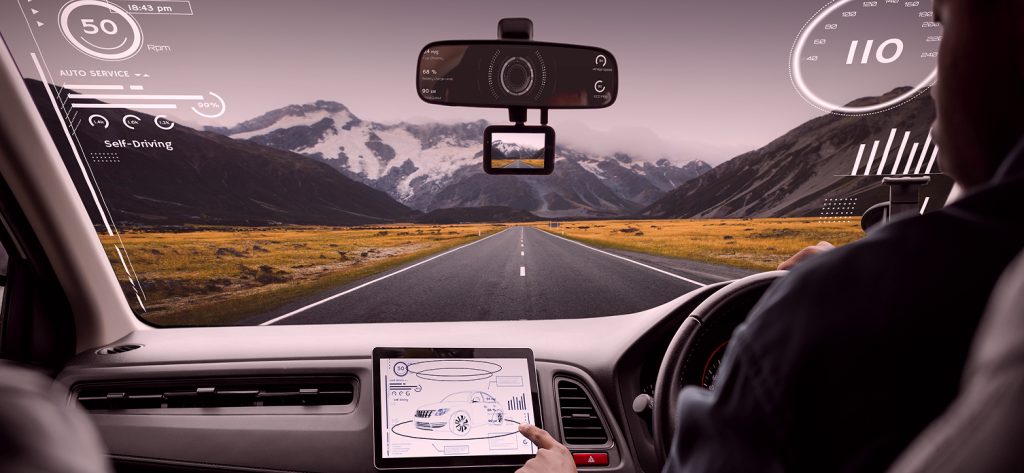In the face of rapid urbanization and the growing impact of climate change, smart cities have emerged as a powerful solution to creating more sustainable, resilient, and livable environments. One of the key components driving these intelligent cities is the integration of advanced environmental monitoring technologies. HyperNym’s state-of-the-art environmental sensors play a crucial role in providing cities with the tools needed to track and improve air quality, weather conditions, and overall sustainability.
The Rise of Smart Cities
Smart cities leverage cutting-edge technology to improve the quality of life for their residents. By integrating Internet of Things (IoT) devices, real-time data analytics, and automated systems, smart cities can make informed decisions that drive improvements across various sectors, including transportation, energy, healthcare, and the environment. As cities face increasingly complex challenges like pollution, extreme weather, and resource management, these technologies are becoming essential to building urban environments that are not only efficient but also environmentally sustainable.
Advanced Environmental Sensors for Smart Cities
HyperNym’s environmental monitoring solutions are at the forefront of this transformation, providing advanced sensors that monitor a range of atmospheric conditions critical to urban health and sustainability. These sensors track key environmental factors such as:
- Air Quality: Including particulate matter (PM1, PM2.5, PM10), ozone (O3), carbon dioxide (CO2), carbon monoxide (CO), ammonia (NH3), sulfur dioxide (SO2), and oxygen (O2).
- Weather Conditions: Monitoring temperature, humidity, and precipitation.
- Real-Time Data Analytics: Providing actionable insights to stakeholders.
By deploying these sensors in strategic locations across a city, HyperNym enables local governments and urban planners to gain a comprehensive understanding of their environment, empowering them to act on issues affecting both the present and future sustainability of their communities.
Improving Air Quality with Real-Time Monitoring
Air pollution is a major concern for many urban centers, with particulate matter like PM2.5 and gases such as carbon monoxide and sulfur dioxide linked to respiratory issues and other health problems.
HyperNym’s environmental sensors provide real-time monitoring of air quality, enabling cities to detect pollution hotspots and implement timely interventions. For instance, when a rise in PM2.5 levels is detected in a specific neighborhood, local authorities can issue health advisories or take actions such as restricting vehicle emissions or increasing green space initiatives to reduce pollution.
Furthermore, with long-term historical data provided by HyperNym’s solutions, cities can track trends and develop strategies to improve air quality over time. This data can also be shared with the public to raise awareness and encourage behaviors that promote cleaner air.
Enhancing Weather Resilience
Smart cities must also be resilient in the face of unpredictable weather patterns and extreme conditions. HyperNym’s environmental sensors help cities stay ahead of climate-related challenges by providing accurate and timely weather data. By continuously monitoring temperature, humidity, and precipitation levels, local governments can predict weather changes and prepare for extreme events, such as heatwaves, floods, or storms.
For example, the sensors can detect a sudden drop in temperature, triggering alerts for freezing conditions that might impact road safety. Similarly, rainfall patterns can be tracked to anticipate flooding risks, enabling better planning for drainage systems and emergency response teams.


Promoting Sustainability Through Data-Driven Decisions
HyperNym’s environmental monitoring solutions also contribute to broader sustainability goals by providing cities with the data needed to optimize resource usage and reduce waste. For example, monitoring atmospheric gases like carbon dioxide and ammonia can help cities track emissions and develop strategies to reduce their carbon footprint.
In addition, historical data on weather and environmental conditions helps city planners make informed decisions regarding infrastructure development, such as where to build green spaces, which areas require more air quality interventions, and how to manage water resources efficiently. This data-driven approach ensures that sustainability initiatives are not based on guesswork but rather on solid evidence, leading to better outcomes for the environment and future generations.
Learn how hypernym implements TwinScape Solution to transform a Dubai Mosque into a Smart Mosque to optimize the energy utilization, reducing carbon footprints to improve operational efficiency.
Empowering Citizens and Communities
HyperNym’s real-time alerts and notifications enable cities to keep their residents informed about changes in air quality, weather, and potential hazards. By fostering a sense of community engagement, citizens are empowered to take action—whether it’s reducing energy consumption during high pollution periods or avoiding outdoor activities during a heatwave. This level of awareness encourages collaboration between governments, businesses, and citizens to create cleaner, safer, and more resilient urban environments.


The Future of Smart Cities and Environmental Monitoring
As smart cities continue to grow, the demand for advanced environmental monitoring solutions like those provided by HyperNym will only increase. With ongoing advancements in sensor technology, data analytics, and machine learning, the potential to transform urban living and mitigate the effects of climate change is vast. By equipping cities with the tools to monitor, analyze, and act on environmental data, HyperNym is helping create a more sustainable, resilient future for smart cities across the globe.
By showcasing how HyperNym’s solutions are transforming smart cities, this blog can highlight the intersection of cutting-edge technology and environmental sustainability, positioning HyperNym as a leader in driving impactful change in urban environments.




